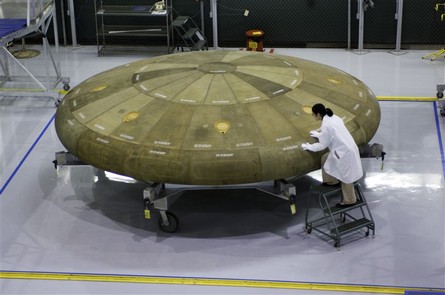Boeing has delivered a prototype heatshield for NASA's Orion crew exploration vehicle (CEV). The 5m-diameter ablative heatshield would protect the Orion capsule during re-entry into Earth's atmosphere.
The so-called thermal protection system (TPS) manufacturing development unit (MDU) was produced by Boeing Advanced Systems under contract to NASA Ames Research Center in California.

© Boeing
The Orion heatshield will dissipate some of the extreme heat generated during atmospheric reentry by gradually burning away. The TPS must withstand a lunar-direct return, during which the capsule will re-enter at much higher speed and generate about five times more heat than missions returning from the International Space Station.
Boeing's baseline TPS is fabricated from phenolic impregnated carbon ablator (PICA), which is produced by Maine-based Fiber Materials. PICA was selected after it performed well as the heatshield material for NASA's Stardust comet sample-return mission, the company says.
The largest ablative heatshield ever produced, according to Boeing, the TPS MDU is made up of multiple pieces of PICA, each substantially larger than typical Space Shuttle tiles. This reduces parts count and complexity, the company says.
NASA Ames completed an acceptance review on the heatshield in October, and Boeing has shipped the unit to NASA Kennedy Space Center in Florida for further inspection.
Boeing, meanwhile, is continuing work on the flight heatshield to support an Orion TPS preliminary design review in early 2008. The Lockheed Martin-developed Orion is scheduled to make its first unmanned orbital flight in September 2012 and first manned flight no earlier than September 2013.
Source: Flight Daily News



















